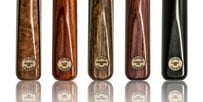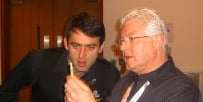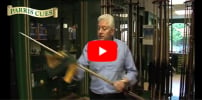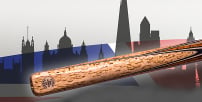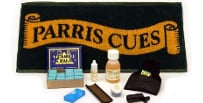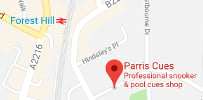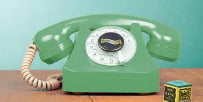This website is using cookies.We use cookies to ensure that we give you the best experience on our website.
Cue Care
Day to Day Cue Maintenance
- Always keep your cue in a good quality case (ideally a rigid box type).
- When storing your cue, if you are not using a case do not leave it leaning against a wall or in a corner, as this can cause it to bend. Always lay your cue flat or store it in a cue rack.
- Do not store cue and case near to a heat source e.g. near a radiator or direct sunlight.
- Do not leave your cue in a car boot as it is hot during the day and cold and damp at night, rapid temperature and humidity changes are bad for the cue.
- During play wipe the cue with a dry cue cloth, if the cue becomes sticky, wipe it down with a slightly damp cloth and buff dry immediately. Also see Cleaning Your Cue video..
- Never use sand paper on the cue, this removes the protective sealer from the shaft leaving the wood exposed, this will allow the shaft to dry out or absorb moisture. Sanding also gradually wears away the cue shaft, especially with Ash cues where the dark grain is softer than light wood, it can make the cue uneven.
- Occasionally, (3-6 months depending on the amount you play) treat the cue with raw linseed oil. Wipe cue down with a damp cloth and dry. Do not use a lot of water or this can cause the cue to swell. Apply oil onto cue with a cloth or paper towel, leave overnight to soak in. Wipe off surplus oil and buff cue with clean cloths until smooth and dry and no residue oil is visible on a clean cloth. If the cue feels sticky wipe with damp cloth and dry and buff.
- If cue is jointed, occasionally clean brass faces of joint with very fine wire wool (00-00 grade). Dirt or grease on the faces of joint can affect the contact and sound when striking cue ball.
- To check your cue for straightness. Close one eye and sight down the cue, from the end of the butt through to the tip (as if you are sighting a rifle) whilst turning the cue as you sight down it. The cue should look perfectly straight and not appear to turn to one side. This is a much more reliable method of checking a cue for straightness compared to the traditional method of rolling a cue on the snooker table. Modern cues from most manufacturers are made with a slightly thicker butt half to give the cue more power. Compared to a straight taper that cues traditionally had, the gradual taper used today will naturally make the cue rock or wobble when rolled on the snooker table.
Re tipping a Cue
- Cut off old tip with a craft knife
- To level the top of ferrule, scrape with a craft knife or use a cue top sander. Make sure top of the cue and ferrule are perfectly flat and level.
- Using a tip size slightly larger than ferrule, flatten the back of the tip by holding the it between thumb and forefinger and rubbing on 240 grit abrasive paper placed on a flat surface, wipe dust from back of tip.
- Apply glue to top of cue, ideally use 2 part epoxy glue, such as Araldite, or Gel superglue.
- Gently place tip on to the glue and carefully centre tip with ferrule. Then press the tip down firmly, wipe off excess glue then gently release pressure (hold pressure on for 1 minute if using super glue).Leave glue to cure, recommended overnight for epoxy and 10-20 mins for superglue.
- Turn cue upside down placing tip down on cutting board and gradually trim off the excess tip to the size of ferrule using very sharp craft knife (suggest new blade). The closer you can trim the tip to the ferrule the less sanding you will need to do, this will also create less wear on the ferrule).
- With a flat file or course tip shaper crate a rough dome on the top of the tip, filing from the centre of the tip to the outside in a rocking motion, turning the cue as you go.
- With a strip of fine abrasive paper smooth the side wall of the tip into the ferrule, making sure not to touch the wood of the shaft bellow the ferrule with the abrasive paper.
- Finish off the dome of the tip with a tip shaper using a fine grade of abrasive paper in the same rocking action as before. Repeat No8

